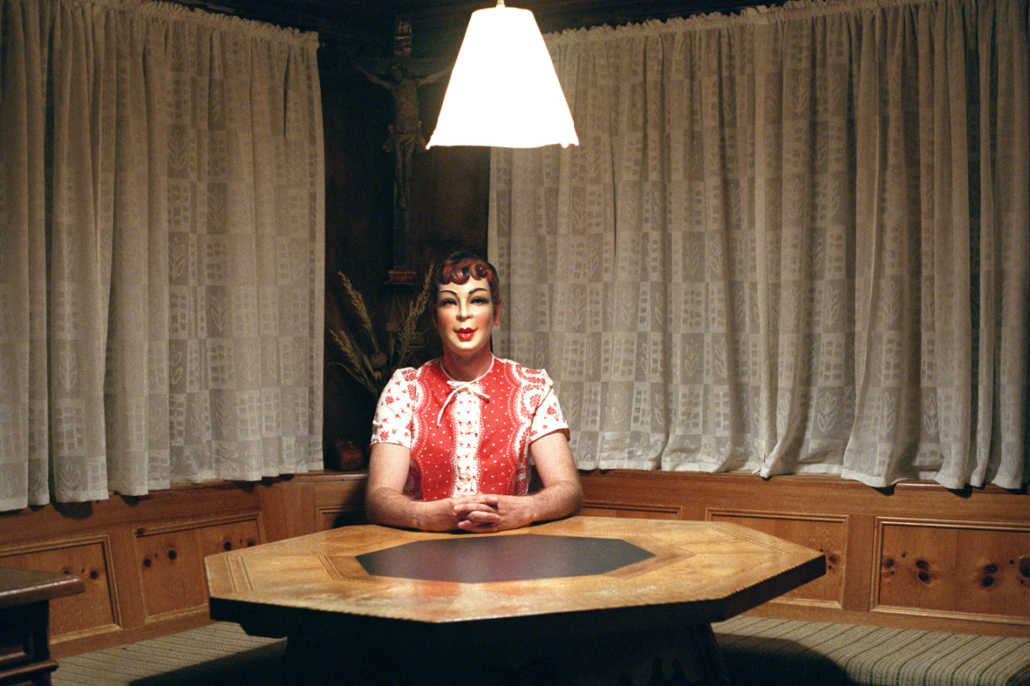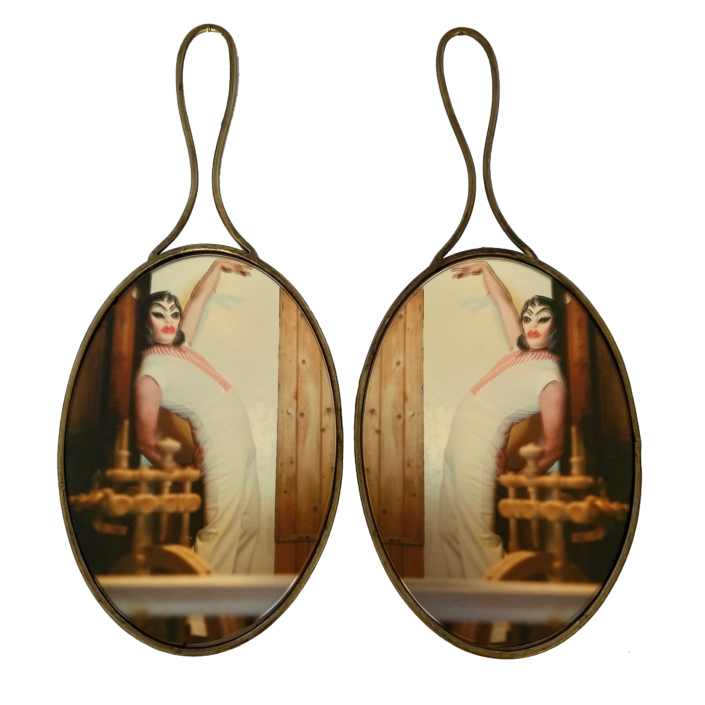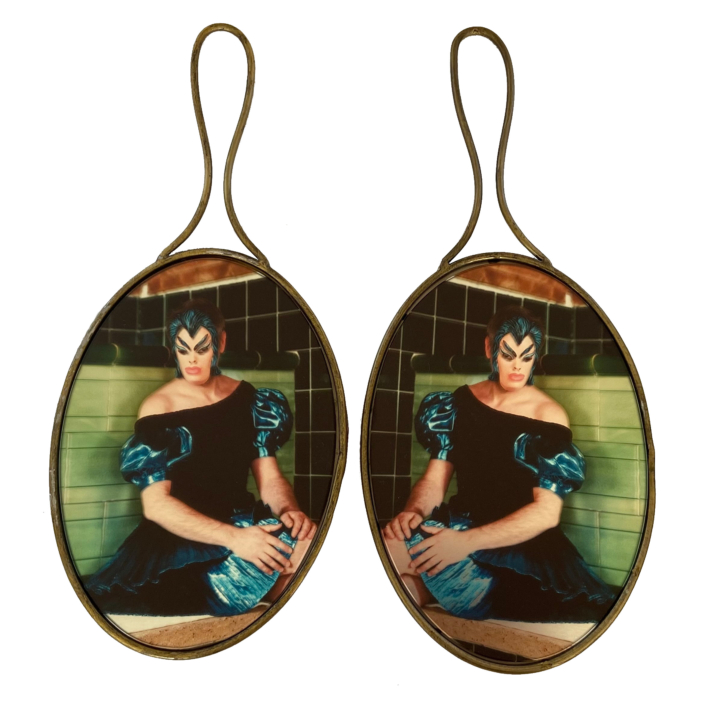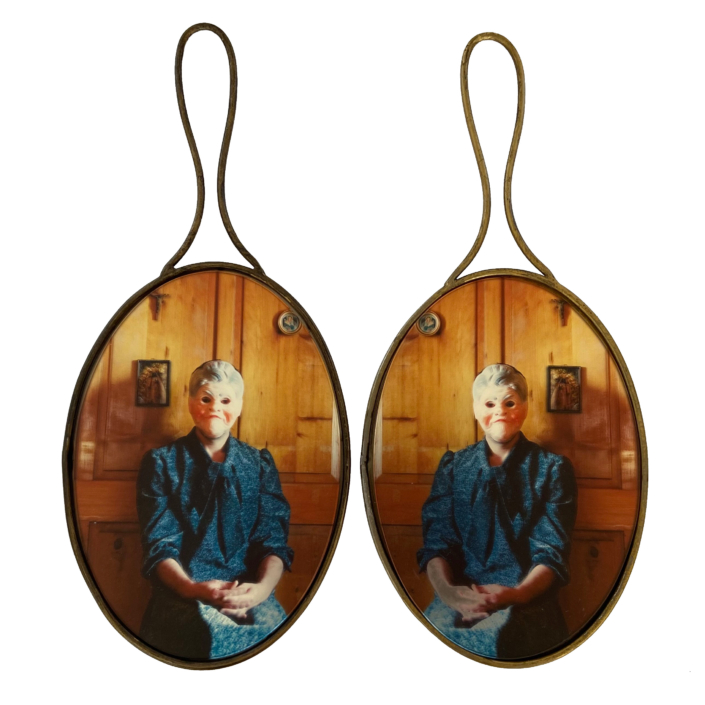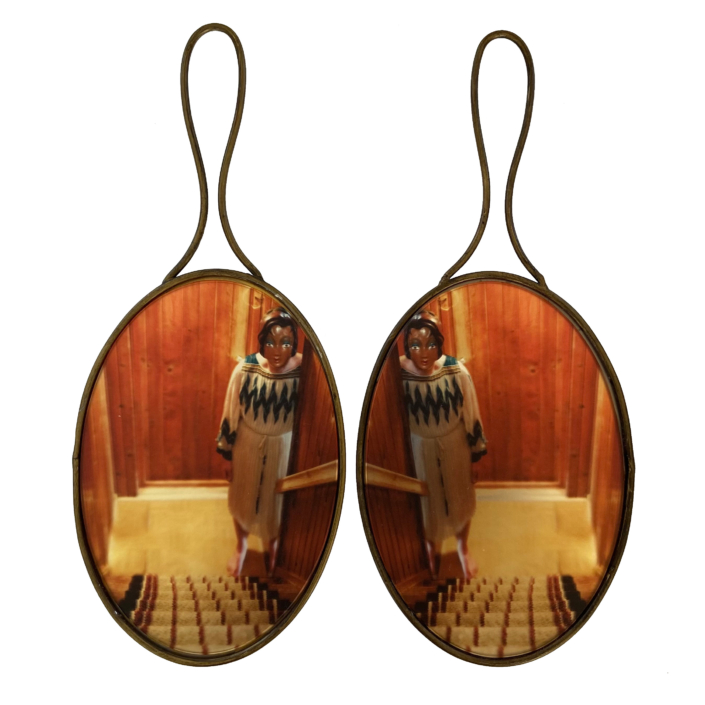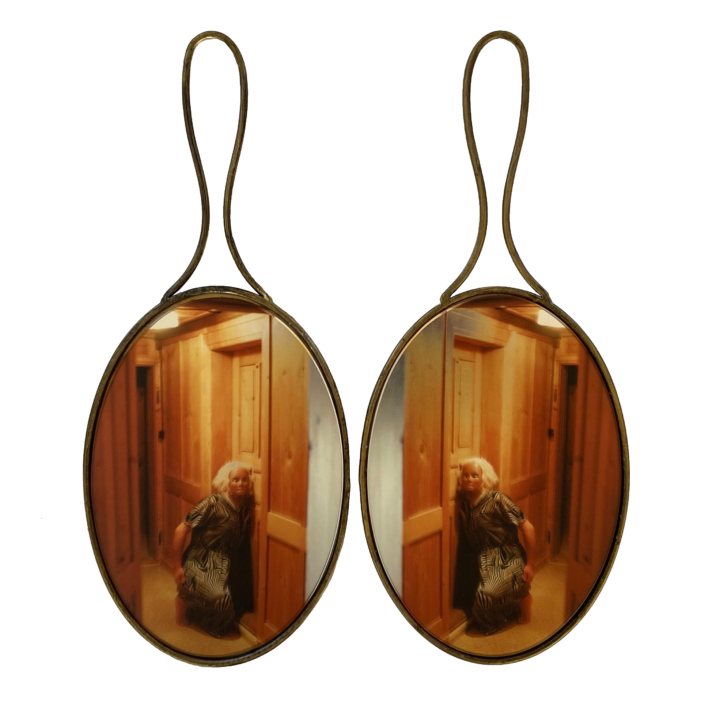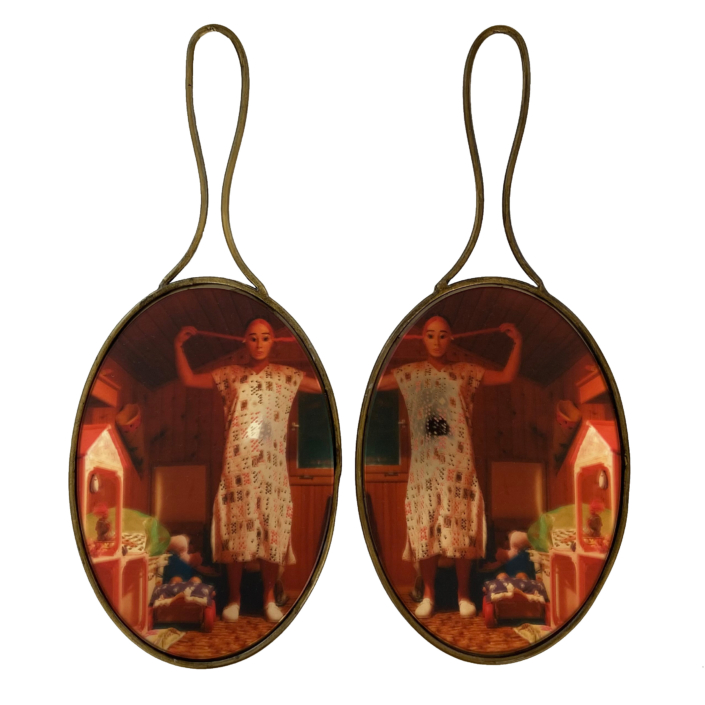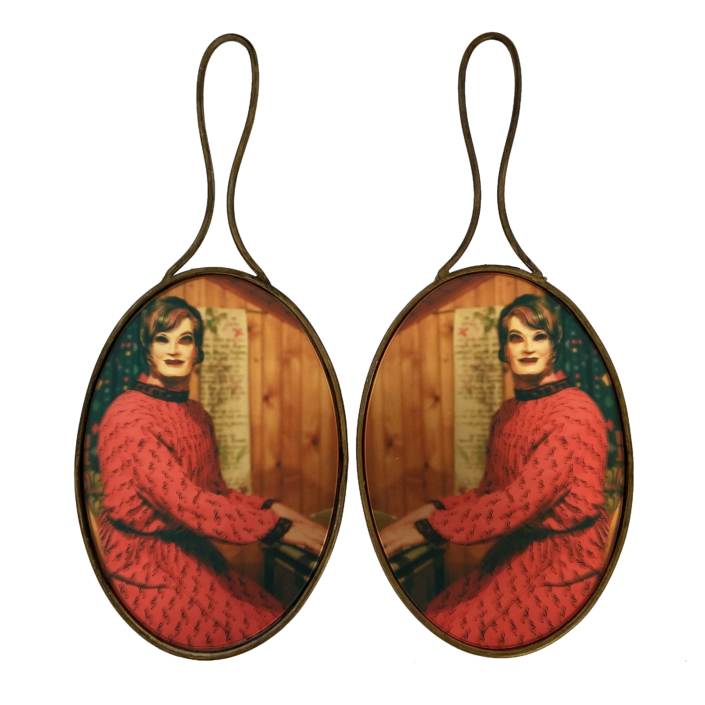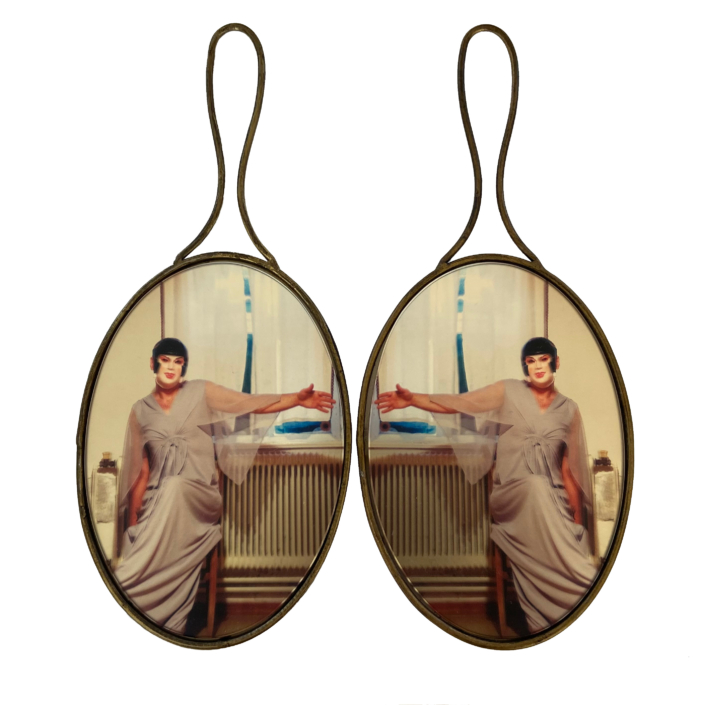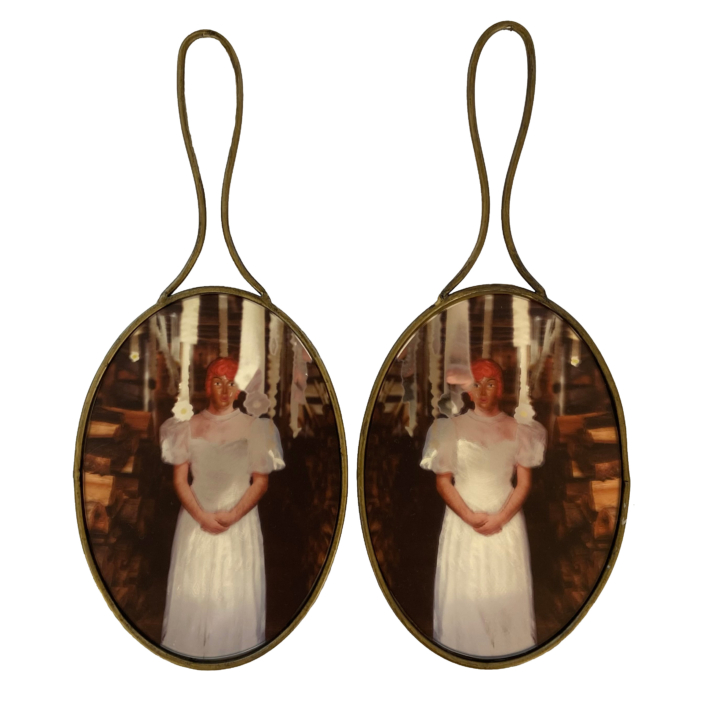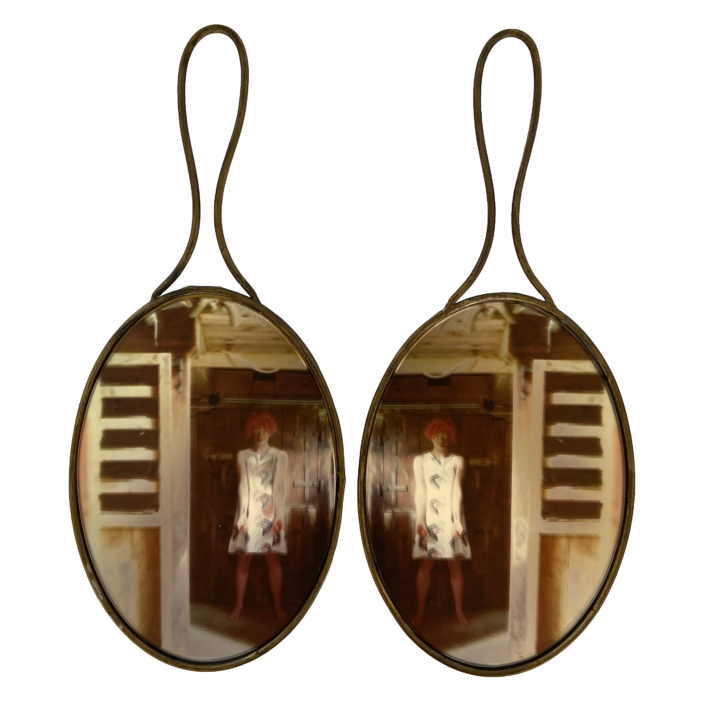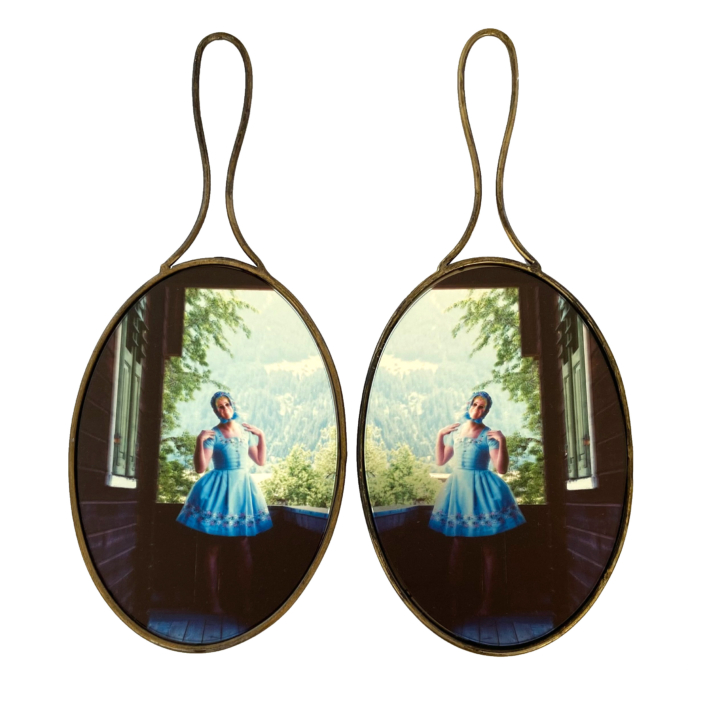RUDOLF SAGMEISTER | Marko Zink’s Daguerreotypes
A layered autobiographical examination by way of photography; scenes from the artist’s family history—his childhood and youth, shaped by his mother, grandmother, and aunts—staged in his parental home in the remote village of Gaschurn, located in the Alpine valley of Montafon in the Austrian state of Vorarlberg: In large-format photographs, the artist—masked and wearing his grandmother’s dress—sits at the family dining table in the corner underneath a folk-art crucifix. A final deliberate farewell prior to the sale of the several-hundred-year-old parental home.
Hung on the black walls of the small, darkened exhibition space are likenesses of his mother’s sisters, his aunts, played by the artist himself, each pose, dress, and mask carefully selected and photographically staged at authentic locations in his hometown. Printed on small-format hand mirrors and presented in pairs like butterfly wings in close succession. The dual, slightly uneven hanging is also reminiscent of nineteenth-century stereograms, in which two pictures were captured by lenses placed at the same distance as a person’s eyes, thus creating the visual illusion of a three-dimensional image.
Depending on the location and the way the light hits, the perception changes, the image becomes a mirror, the print is read as a negative or a positive. This alludes to the early days of photography in the mid-nineteenth century, when the small-format daguerreotype portraits on reflecting silver-plated copper only revealed their content when they were tilted or looked at from a certain angle. As photographs were still expensive and hard to make at the time, loved ones were often only photographed post mortem for the bereaved to have something to remember them by.
A mirror image of the family history, of that sense of being involved in a multigenerational legacy of genes, their successes, social statuses, and opportunities, with all their advantages and disadvantages, sicknesses, early deaths or long happy lives in safety and wealth, or in poverty, debt, and guilt. Everyone should hold a mirror up to themselves and recognize themselves and their entanglements, their foreignness and comfort in the bosom of their family—or their emancipation and liberation from these chains.
ARIANE GRABHER | A Well-Stocked Fridge and Animal Hookers
The new series “Innerer Film” (Inner Movie) is also based on a personal experience. In it, Marko Zink bids farewell to his parental home, his place of origin, fraught with memories, sold in 2020. His grandmother, the “soul of the place”, his mother, and his five aunts, who all lived in the house together, had a formative impact on the artist, and it is to them that he dedicates the completed series. Twelve images printed on and into hand mirrors and mirrored once again—resulting in a pair reminiscent in its arrangement of butterfly wings—are not only a reference to metamorphosis but also an homage. Marko Zink: “We are all but reflections, images of our counterpart in which we see ourselves reflected not just every day but probably for our entire lives.” Concluding the series is the photograph “Morgenstern der finstern Nacht” (The Dark Night’s Morning Star), the final image that was taken just before leaving the parental home. In it we see the artist sitting at the Montafon table that for many years had served as the house’s center and meeting point for the entire family.
EXHIBTION VIEWS | Künstlerhaus Palais Thurn & Taxis Bregenz, Austria | Suite Franziska Hausmaninger, Austria
EXHIBITION PHOTOS | Rudolf Sagmeister | Matthias Bildstein

